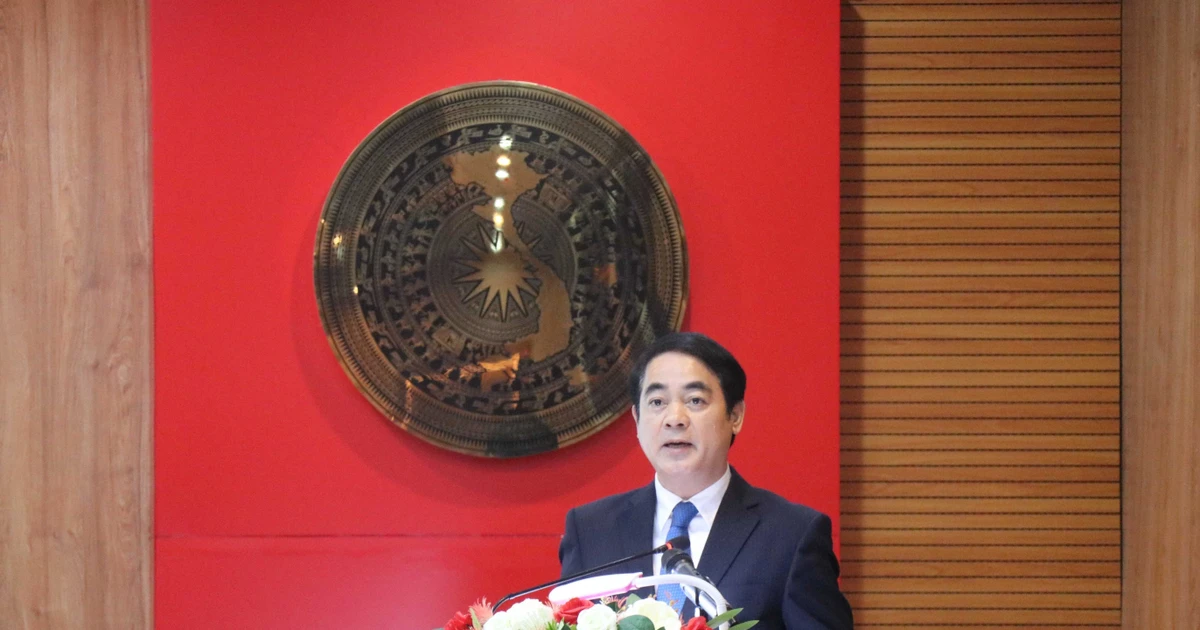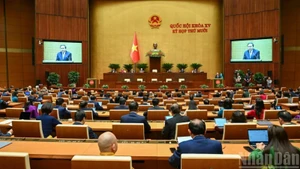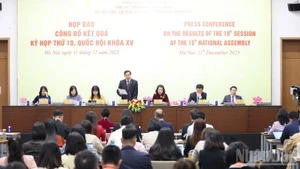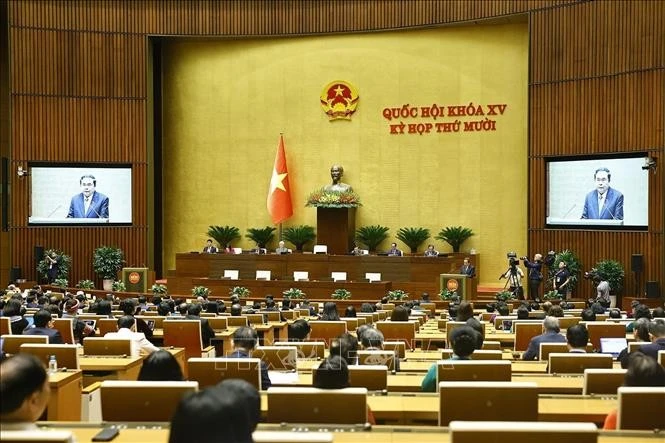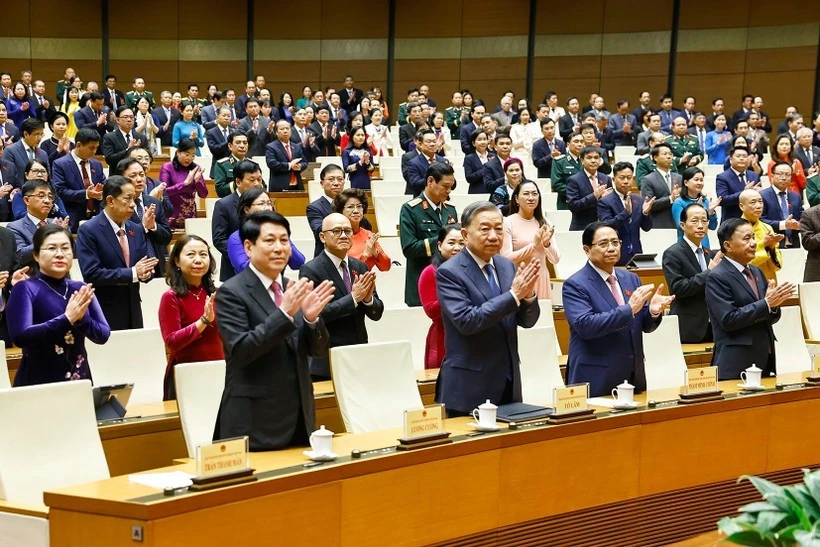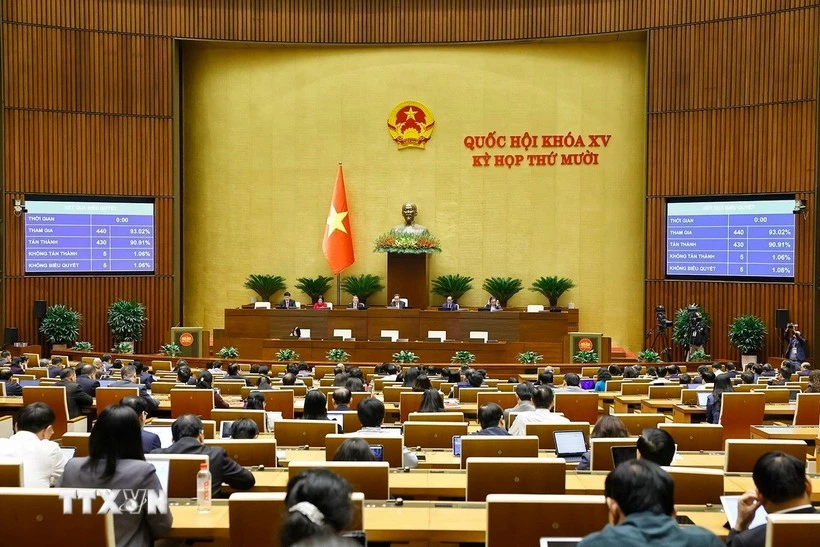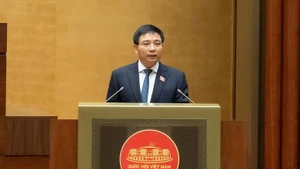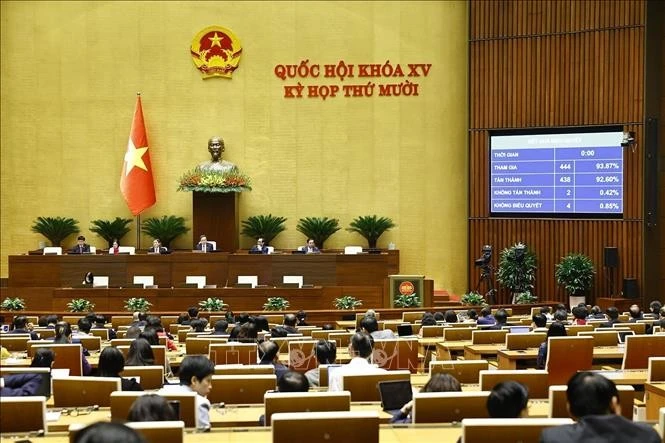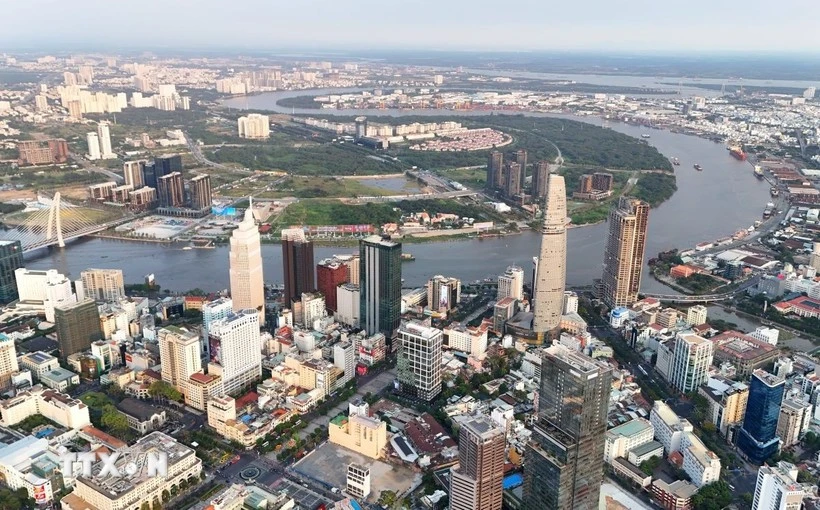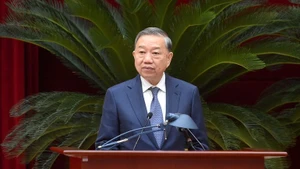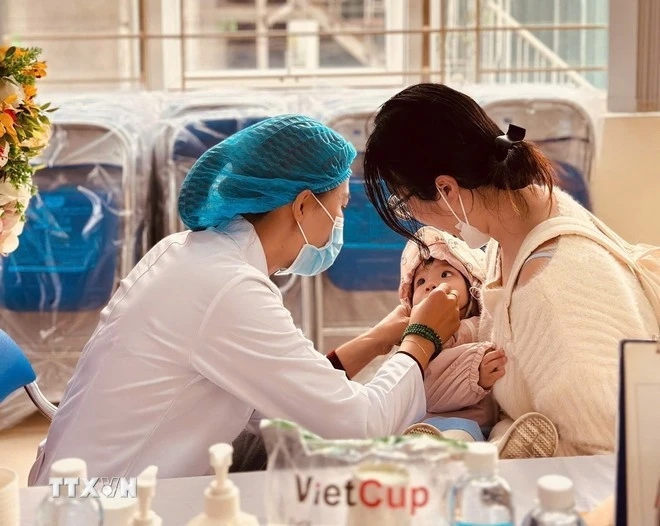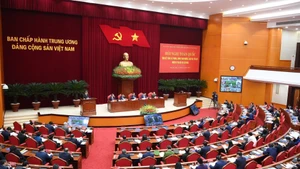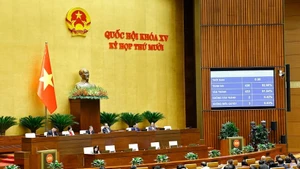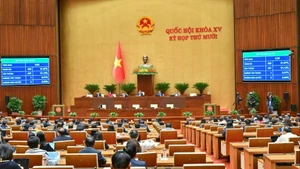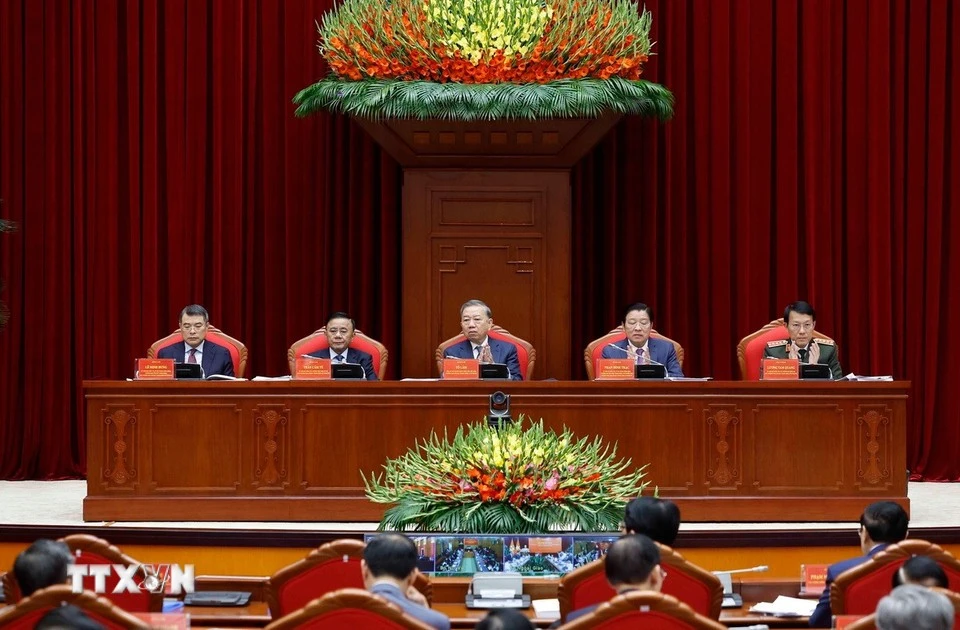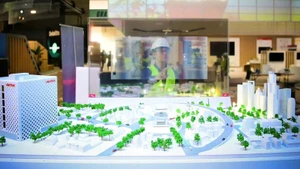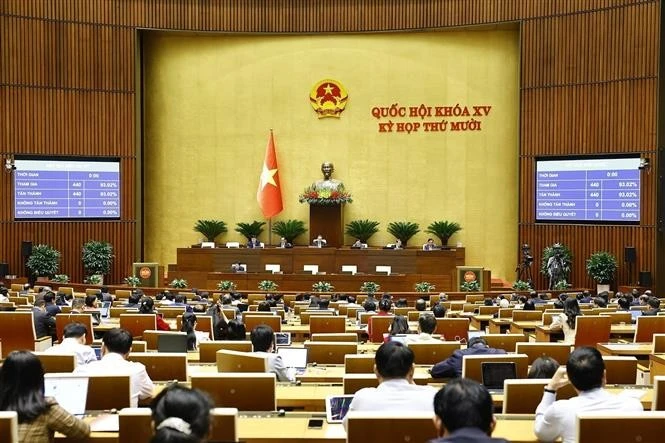Q: What are the most remarkable achievements of Khanh Hoa Province during the 2020–2025 term?
A: It can be said that during the 2020–2025 tenure, Khanh Hoa’s socio-economic development has achieved many outstanding results. The province’s economic growth ranks among the highest in the country. The economic structure has shifted positively, in line with the renewal of industrial and service growth models.
Khanh Hoa has gradually affirming its role as a national energy hub, with the Van Phong 1 BOT Thermal Power Plant (capacity of 1,320 MW) and dozens of renewable energy projects totaling 3,750 MW, accounting for 18% of the country’s total power capacity.
The quality of education and vocational training has been improved. The healthcare system and public health services have been strengthened. National defence and security have been consolidated; political stability and social order have been maintained. The material, cultural, and spiritual life of the people has continued to improve.
Q: What role has the development of mechanisms and policies played in achieving those results?
A: Based on practical realities, the province has proactively studied, advised, and proposed to the central committee the issuance of special mechanisms and policies, such as: Resolution No. 09-NQ/TW (January 28, 2022) of the Politburo on building and developing Khanh Hoa Province to 2030, with a vision to 2045; Resolution No.55 of the National Assembly on piloting a number of special mechanisms and policies for Khanh Hoa’s development; and Resolution No.189 on several special mechanisms and policies for investment in the Ninh Thuan Nuclear Power Project.
Khanh Hoa became the sixth province in the country to have its provincial master plan for 2021–2030, vision to 2050, approved by the Prime Minister. From this perspective, the rapid implementation of planning serves as both a legal foundation and a strategic orientation to attract investment resources.
Q: Could you outline some of the key economic growth drivers identified by Khanh Hoa Province?
A: Immediately after the administrative consolidation and merger, the Khanh Hoa Provincial Party Committee issued Resolution No. 01-NQ/TU on achieving double-digit economic growth for the 2025–2030 period, with the goal of soon turning Khanh Hoa into a centrally governed city.
Accordingly, the province focuses on four major growth pillars: industry, energy, tourism–services, and urban development–construction. The key solution lies in resolving three major bottlenecks—strategic infrastructure, quality of human resources, and long-delayed or stagnant projects—to create new momentum for economic growth and effectively capitalise on the “golden window” for breakthrough development.
Q: What practical experiences and lessons has the province drawn in Party building, political system development, and socio-economic growth during this term?
A: First of all, the work related to Party building and the development of the political system in Khanh Hoa Province have seen many innovations, especially in renewing leadership methods — characterised by “centralised form, practical content, decisive actions, and tangible results.” The leadership capacity and combat strength of Party organisations at all levels have been significantly improved.
Khanh Hoa is one of the pioneering provinces in researching and implementing a set of Key Performance Indicators (KPI) to measure and evaluate the performance and efficiency of all officials, civil servants, and public employees — thereby overcoming long-standing weaknesses in the personnel evaluation process. This effort links the results of staff assessments with training, appointment, and personnel management.
Notably, in a short period, following PCC’s guidelines on streamlining organisational apparatuses, the province has introduced innovative, methodical, and scientific approaches in organising and appointing personnel, especially in the evaluation and placement of leadership and management staff at all levels, ensuring they meet assigned tasks and responsibilities.
Immediately after the administrative consolidation and merger, the Khanh Hoa Provincial Party Committee issued Resolution No.01-NQ/TU on achieving double-digit economic growth for the 2025–2030 period, with the goal of turning Khanh Hoa into a centrally governed city.
Q: Could you elaborate on the leadership principles of the Provincial Party Committee and its top leaders?
A: The Provincial Party Committee always adheres to the Party Central Committee’s guidelines and resolutions, concretising them through breakthrough mechanisms and policies to remove bottlenecks and unlock resources. It consistently upholds Party-building principles, strengthens discipline and rule enforcement, ensures power oversight, and promotes democracy and unity within the Party organisation. Economic development is always associated with social progress and justice, environmental protection, and national defence, security, and international integration.
In leadership and direction, the top leader must demonstrate their role by proposing accurate, breakthrough, and strategic solutions, taking decisive and consistent actions, and ensuring clear delegation and accountability. Along with that, it is essential to promptly inspect and correct shortcomings and weaknesses.
Q: Digital transformation is one of the key foundations for Khanh Hoa to realise its aspiration for advancement. Could you share the results achieved so far?
A: Implementing the Politburo’s Resolution No.57-NQ/TW and the provincial resolutions and plans on digital transformation, Khanh Hoa has so far completed 21 out of 25 tasks in Phase 1 and 16 out of 16 tasks in Phase 2 assigned by the central government. The province has put into operation the Intelligent Operations Centre (IOC), which is now connected to 11 national systems and integrated with 23 shared data services. The rate of online administrative records has reached 45.12%; digital community technology teams have been established in 100% of communes and wards; and the provincial e-commerce platform now features 67 enterprises with 864 products showcased online.
Q: What are the key goals and solutions for digital transformation in the coming period?
A: One of the major goals set for the future is that by 2030, 99% of residents will use the internet. The Provincial Party Congress Resolution outlines several key solutions: completing the digital infrastructure and specialised databases, ensuring synchronisation from the provincial to grassroots levels, along with cybersecurity and data protection; accelerating the full-process online public services, aiming to increase the current rate from 45% to over 70% by 2026, to create maximum convenience for citizens and businesses; developing high-quality human resources, promoting digital skills training for officials, civil servants, public employees, and the public; introducing policies to attract and utilise digital talent.
However, some limitations and challenges remain, such as the low proportion of full-process online public services is still low; the underdeveloped digital infrastructure in mountainous and island communes; and the shortage of high-quality human resources in information technology and digital transformation.
The Provincial Party Committee has identified digital transformation as a key driving force to enhance productivity, quality, efficiency, added value, and competitiveness in the province’s economic development.
Q: What are the key development goals set by this Congress to create new growth momentum for the province?
A: In the new development space, Khanh Hoa is determined to enter the “decade of elevated growth” and become a centrally governed city by 2030.
The first Provincial Party Congress (2025–2030 term) focuses on several major targets: average annual GRDP growth of 11–12%; GRDP per capita growth at 14% per year; by 2030, the province to be among the top 10 localities nationwide in per capita income; the industrial–construction–service sectors will account for 90% or more of the economy; the digital economy to make up 35% of GRDP; total factor productivity (TFP) contribution at over 55%; labour productivity of up 11% annually; state budget revenue at up 12% per year, striving to be among the top 10 provinces in domestic revenue; total social investment capital of 1,050 trillion VND (growing over 20% per year); and urbanisation rate at 70%.
In terms of culture, society, and environment, human development index (HDI) is expected to reach 0.78; the average life expectancy is improved to 75.5 years (with 68 healthy years); the non-agricultural urban labour will reach 90%; the trained labour force will be 90% (of which 40% hold degrees or certificates); the poverty reduction will be 1–1.5 percentage points per year; the forest coverage will reach 47%; and clean and hygienic water access meets both rural and urban targets.
Annually, the Khanh Hoa Provincial Party Committee is rated “completes tasks well” or higher; more than 90% of grassroots Party organisations and members fulfill their duties effectively; and new Party members are admitted at a rate of 3–4% of the total membership each year.
Q: What are the key solutions to realise the goals you just mentioned?
A: The Provincial Party Committee will focus on several core solutions, including continuing to improve and concretise the special mechanisms and policies issued by the PCC for Khanh Hoa; persistently promoting administrative reform, building a digital government, and improving provincial competitiveness indicators such as the PCI (Provincial Competitiveness Index) and PAR Index (Public Administration Reform Index); creating a transparent, open, and competitive investment environment; prioritising investment in strategic infrastructure, particularly transportation, seaports, airports, digital infrastructure, and power transmission, to ensure that investors can implement projects effectively and conveniently.
The Provincial Party Committee has also directed the development of an action programme to concretise the targets, indicators, and tasks immediately after the Congress concludes successfully. Based on this programme, responsibilities will be clearly assigned to each Party committee, organisation, agency, and unit, with specific roadmaps, timelines, resources, and monitoring mechanisms established to ensure implementation.
Entering a new term and a new era of opportunity, under the motto “Solidarity – Democracy – Discipline – Responsibility – Breakthrough – Development”, the Party, government, and people of Khanh Hoa Province are determined to unite, join hands, and work together to realise the aspiration of elevating development, becoming a centrally governed city, and serving as a major growth pole of the nation, where the people enjoy a high standard of living, peace, and happiness.
Thank you very much!
